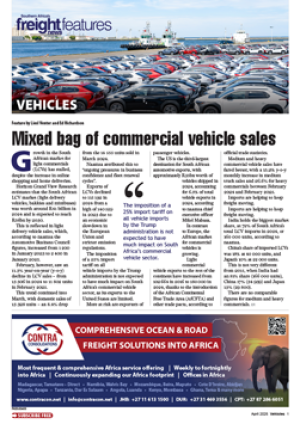It is the already- powerful political lobbies of the SA textile and clothing industries that are being kept happy in this latest tariff restructuring THE BOARD on Tariffs and Trade (BoT&T) - whose new tariff structure on clothing imports may put a number of retailers of high-value clothing out of business - has no intention of changing its mind.
Said a letter from the Board, replying to written complaints about the new tariffs: We realised that such a step would cause difficulties for some individual firms, but had to weigh this up against the future survival and growth of two (manufacturing) sectors employing more than 200 000 persons.
And it is the already-powerful political lobbies of the SA textile and clothing industries that are being kept happy in this latest tariff restructuring, according to the BoT&T.
The textile and clothing industries are major players in the SA economy - particularly in terms of employment, said the Board letter. We need to stabilise and promote growth in these industries to provide the employment growth we so urgently need.
It is generally accepted that these industries would find it almost impossible to compete successfully against imports from low-cost producers in the East, and the most appropriate growth path would be moving up the value chain, and increasingly concentrate on quality/design/fashion based products.
This is utter rubbish, according to Louis Knight of forwarding agents LM Knight - which niche markets in clearing and forwarding high-value clothing imports.
It has already been proven that SA manufacturers just don't have the experience, expertise or materials made locally to be able to move into the high-quality market for designer-label clothing.
If they (the SA clothing and textile producers) haven't got there by now, they'll never get there, he said. If the likes of Levi-Strauss have already looked at this market, and have decided against having their high-class jeans manufactured here, what is going to convince them to change their minds? Knight feels that it has already been proven that SA manufacturers just don't have the experience, expertise or materials made locally to be able to move into the high-quality market for designer-label clothing. He cited one instance in his selective customer base where it had been tried - and failed.
We have a customer in Cape Town who imports very exclusive silk garments from Paris, said Knight. She had us import some of the very special silk from which these garments are made, and went to some of the biggest clothing manufacturers in SA to get them to make trial batches.
She sent these examples to the Paris designers, and had them rejected out-of-hand as being of far too low-quality to bear their label. And, while there was a possible price-incentive before for this customer to look at the possibility of local manufacture, this should be even more-so now. According to Knight, the previous import duty of 2,5%-3% has now gone up to the new, ad valorem minimum duty of 40%.
But, he said, there is no way that she will look at the SA clothing manufacturers again. They just can't produce the goods. However, it is local manufacturers moving up the value chain that is one of the reasons behind the Board's new duties on imported high-value clothing. After further consideration, we came to the conclusion that the initial duty structure was not correctly structured . . . said the Board's letter. Firstly, the ceiling to some extent discouraged manufacturers from moving up the value chain by providing a much lower protection on such products.
And the end result has been the new tariff ratings - duties which are blowing a lot of high-value clothing imports right out of the market, according to their retailers.
